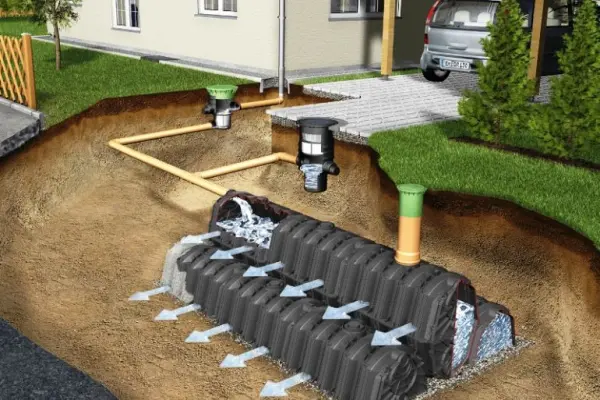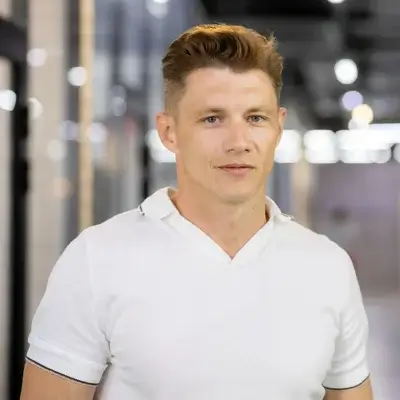Drainage systems for meltwater and atmospheric precipitation — this is not just a technical necessity, but a real protection of your property from the destructive consequences of excessive moisture. According to a 2020 study, well-designed drainage systems can reduce flood damage by 60-85%. Statistics show that about 40% of homeowners annually face flooding problems, leading to losses of $8-10 billion on a global scale. Since 2020, the frequency of extreme precipitation has increased by 18%, making surface drainage and drainage systems critically important for protecting plots. By the way, a properly organized drainage system can extend the service life of a house foundation by 15-20 years and save up to 80% of the plot area from flooding.
Storm and meltwater present a serious threat to buildings and the territory itself. Excessive moisture — is like a time bomb for your plot. It causes foundation destruction, cracking of paths, and soil compaction, which destroys vegetation. Deep drainage systems and surface drainage from the house are designed to solve this problem.
What functions does a drainage system perform to protect a plot from flooding?
The drainage system of a plot plays a key role in protecting various elements of your territory from the negative effects of excessive moisture. Last season, I observed how a plot without a proper drainage system turned into a real swamp after just a week of intensive rains. The functions of a drainage system can be divided by the objects it is designed to protect.
Protection of vegetation and plantings
As a result of rainwater and meltwater accumulation, soil compaction occurs. This impedes the access of oxygen and nutrients to the root system of plants. The roots begin to rot, and eventually, the plant dies.
The fertile soil layer is washed away, reducing its quality. Foundation drainage and drainage of the entire plot — is like an immune system for your garden. As a result of silting, mold forms and moss multiplies, which also negatively affects all plantings.
«Installing a proper drainage system is one of the most important steps in landscape design. In my experience, 8 out of 10 cases of tree and shrub death on plots are related specifically to soil waterlogging and the lack of proper water drainage. By investing in quality drainage today, you save thousands of dollars on plant replacement in the future», — notes John Parker, a landscape designer with 15 years of experience.
Protection of buildings and structures
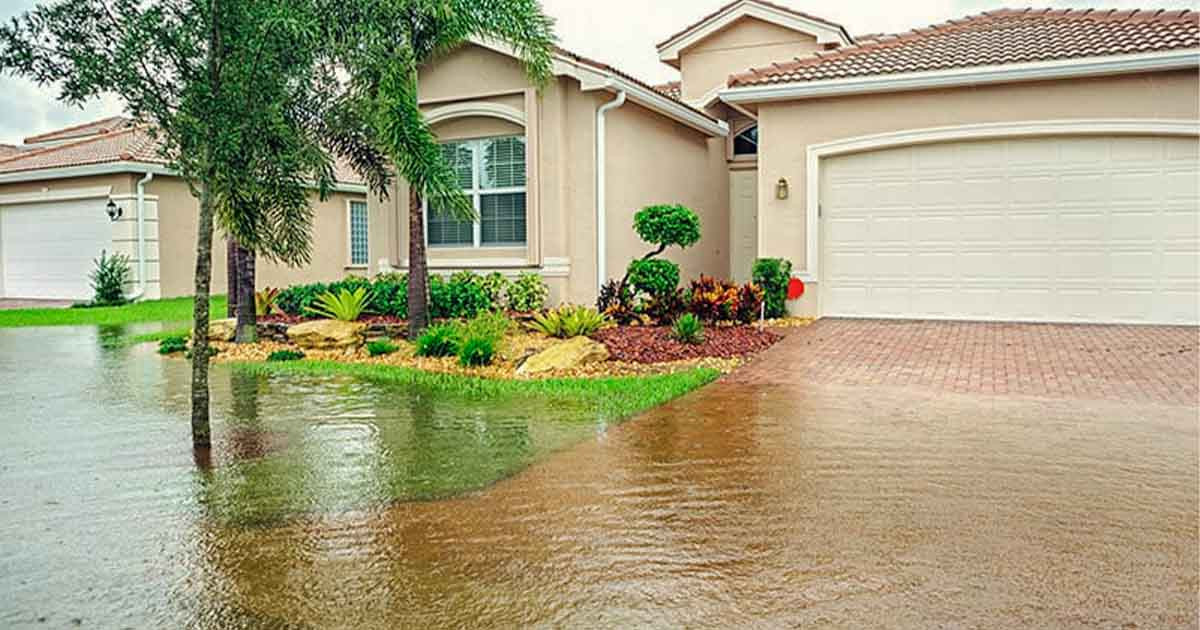
The foundation becomes flooded, which in the long term can lead to its destruction, the appearance of cracks, and structure settlement. It's not always simple. But water can be effectively diverted from the house using a special sloped apron.
Also, favorable conditions are created for the development of mold and fungus, which can cause health problems for residents and accelerated destruction of building materials. The roof drainage system and properly organized downspouts will protect walls and foundation from excess moisture.
Protection of roads and paths
Excess moisture leads to cracking and destruction of road and path surfaces. This is especially true for plots with clay soil. Potholes, holes, and puddles form, creating a danger for vehicular and pedestrian traffic.
In winter, the ice that forms significantly increases the risk of injury. It should also be remembered that chemical reagents used to combat icing are very harmful to vegetation. And it is necessary that they be removed from the plot along with runoff through a water receiving well.
Water drainage systems from the plot: underground drainage and surface drainage
Draining atmospheric precipitation and meltwater from a plot requires a comprehensive approach. The system must effectively collect and direct water in the right direction, preventing stagnation and flooding. In 2025, the most popular solutions became combined systems, including both underground drainage to combat groundwater and surface drainage to collect rainwater and meltwater.
Surface drainage — is a system for draining precipitation into sewage or natural water bodies. It includes a system for collecting precipitation from the plot area and a roof system for draining water from building roofs. The surface system works on the principle of creating slopes and using drainage trays, gutters, and pipes to direct water flows in the required direction.
Protecting the foundation from water: practical solutions
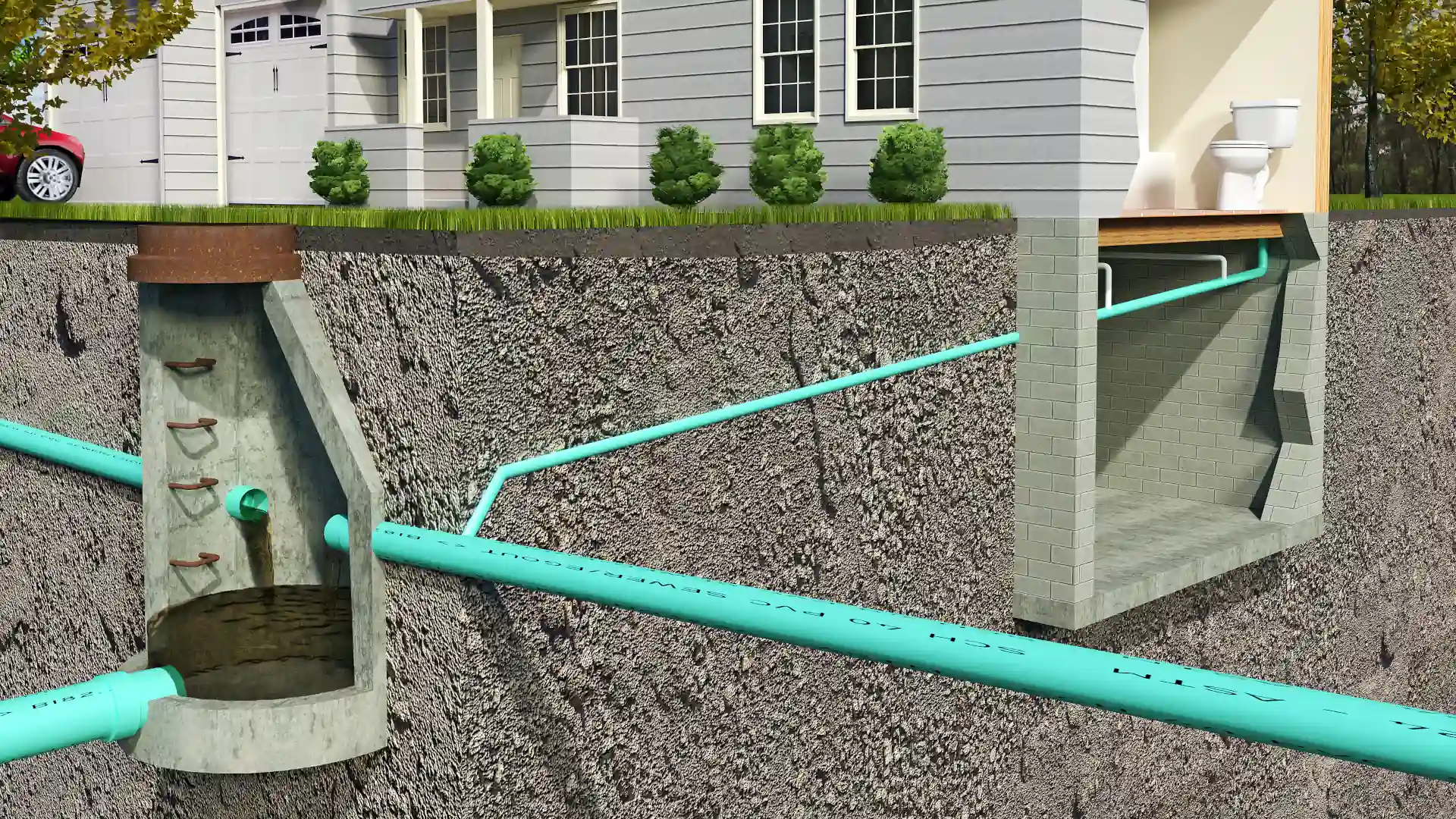
The experience of homeowners shows that the most effective way to protect the foundation from water is a comprehensive approach. Start by creating a drainage perimeter: dig a trench 30-40 cm wide and 40-60 cm deep around the foundation, lay geotextile, fill with drainage gravel of 5-20 mm fraction, install a perforated pipe with a slope of 1-2 cm per meter, and organize water drainage from the house through the drainage system. This solution prevents water accumulation at the foundation and significantly reduces the risk of flooding in basement rooms.
Here are several practical recommendations for protecting the foundation from moisture:
- Install a foundation apron with a width of at least 70-100 cm with a slope away from the house of 1-3%;
- Provide foundation waterproofing using roll or coating materials;
- Organize a roof gutter system with water drainage at a distance of at least 1.5-2 meters from the foundation;
- Maintain the ground level around the house 15-20 cm below the waterproofing level;
- Install drainage wells at low points of the plot to collect excess moisture.
With a high groundwater level, it is additionally recommended to install deep drainage with mandatory consideration of seasonal fluctuations in the water level in the soil.
«In 2019, our family faced a serious problem — our plot was regularly flooded after heavy rains. The house foundation began to collapse, and the garden turned into a real swamp. After consulting with an engineer, we installed a combined drainage system: surface trays for collecting rainwater and deep drainage for groundwater drainage. We also added an apron around the house and a green roof on the garage. The cost of the work was $5000, but within a year, the plot became dry, the foundation strengthened, and the garden came back to life. We not only saved the house but also created a cozy yard where children can play without the risk of getting stuck in the mud», — shares Mark Johnson, a homeowner from a suburb of Seattle, about his experience.
The roof drainage system consists of gutters, pipes, and other elements that ensure water drainage from the roof into the general drainage system. Such organization of water flow allows quickly diverting excess moisture, preventing soil erosion around buildings.
Surface drainage protects the plot and structures from flooding and water stagnation, performing the following important functions:
- Prevents large masses of water from neighboring territories with intercepting ditches;
- Diverts water from the roof through a properly installed roof drainage system;
- Protects the foundation by diverting water from the apron;
- Prevents water stagnation and puddle formation on the plot thanks to linear drainage and point water collection.
Modern water drainage systems from the house include various types of drainage systems, each with its characteristics and advantages. The right choice depends on the specific conditions on your plot.
| Type of drainage system | Purpose | Features | Approximate cost (in $) |
|---|---|---|---|
| Surface linear drainage | Collecting water from the plot surface | Trays with gratings, installed along paths and around the plot perimeter | 1500-3000 |
| Point water collection | Local water collection in problem areas | Rain receivers and water intake wells in lowlands | 800-1500 |
| Roof gutter system | Roof water drainage | Gutters, pipes, funnels for directed precipitation collection from the roof | 1000-2500 |
| Deep (underground) drainage | Protection from groundwater and topwater | Perforated pipes in gravel backfill underground | 3000-7000 |
| Combined system | Comprehensive protection from all types of water | Combination of surface and deep drainage | 5000-10000 |
The choice of atmospheric precipitation drainage system depends on the plot relief, soil type, groundwater level, and climatic features of your region. Drainage systems, the price of which is indicated in the table above, pay for themselves through the preservation of buildings and plot infrastructure.
Main elements of the atmospheric precipitation drainage system
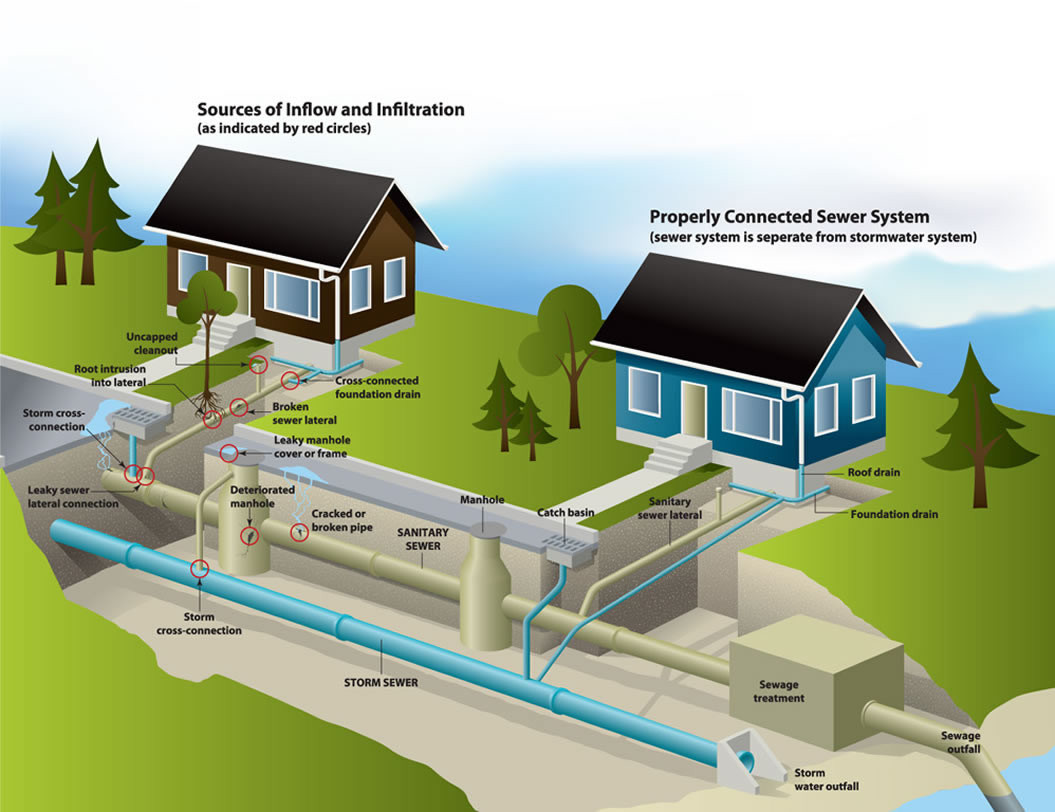 To set up a reliable water collection system, various elements are needed, and by correctly combining them, you can achieve excellent results in protecting the plot from flooding. The main elements include:
To set up a reliable water collection system, various elements are needed, and by correctly combining them, you can achieve excellent results in protecting the plot from flooding. The main elements include:
- Rain receivers — special containers for collecting water in the point water collection system. They can be plastic or concrete, equipped with gratings for filtering garbage.
- Sand traps — devices for catching sand, stones, and other solid particles, preventing clogging of the drainage system. They are usually installed in wells before exiting into the general sewage system.
- Drainage trays — are the main element of storm sewage on the plot. Water from the entire territory is collected in them. Trays can be plastic, concrete, or polymer concrete.
- Drainage pipes — usually perforated, installed underground for draining groundwater and topwater. The slope of the sewage pipes should ensure gravity water movement.
- Water intake wells — collect water from the drainage system before diverting it outside the plot.
- Apron around the foundation — protects the base of the house from flooding, has a slight slope for water drainage.
Trays and other system elements are placed, as a rule, along the edge of the lawn or paths, providing a slight slope of the surface to facilitate water collection. Water collected in the trays then flows to the sand trap, then to the water intake well and underground drainage for final drainage beyond the plot.
Design and calculation of the meltwater drainage system

Before installing a drainage system, it is necessary to properly design it, taking into account the size and relief of the plot, the amount of precipitation in the region, and other factors. Drainage design is like an architectural plan for your plot: miss a detail, and the whole system may prove ineffective.
Calculations will determine the required throughput of the drainage system, pipe diameters, tray sizes, and rain receivers. An incorrectly designed system may prove ineffective or, conversely, excessive, leading to unnecessary costs for materials and installation. Professional drainage design will cost approximately $300-500 but will save thousands on possible mistakes.
«When designing a drainage system, a key factor is the correct calculation of slopes. For effective gravity drainage, the minimum slope of sewage pipes should be 2 cm per linear meter. Insufficient slope will lead to water stagnation and system silting, while too steep a slope will lead to soil erosion at water exit points. It is also important to consider peak loads: the system should cope with water drainage during heavy rains, which are becoming more frequent due to climate change», — advises David Harris, a hydrological engineer.
When designing the system, it is important to consider the following factors:
- The relief of the plot and natural water flow paths;
- Soil type and its water permeability;
- Soil freezing depth in winter;
- Groundwater level and the presence of topwater;
- Average annual precipitation and rain intensity;
- Area of the plot and building roofs;
- Presence of nearby natural water bodies or public sewage.
For accurate calculation of the atmospheric precipitation drainage system, it is recommended to request a consultation on drainage from experienced specialists who can develop an optimal solution for your specific case.
Professional installation and maintenance of drainage systems
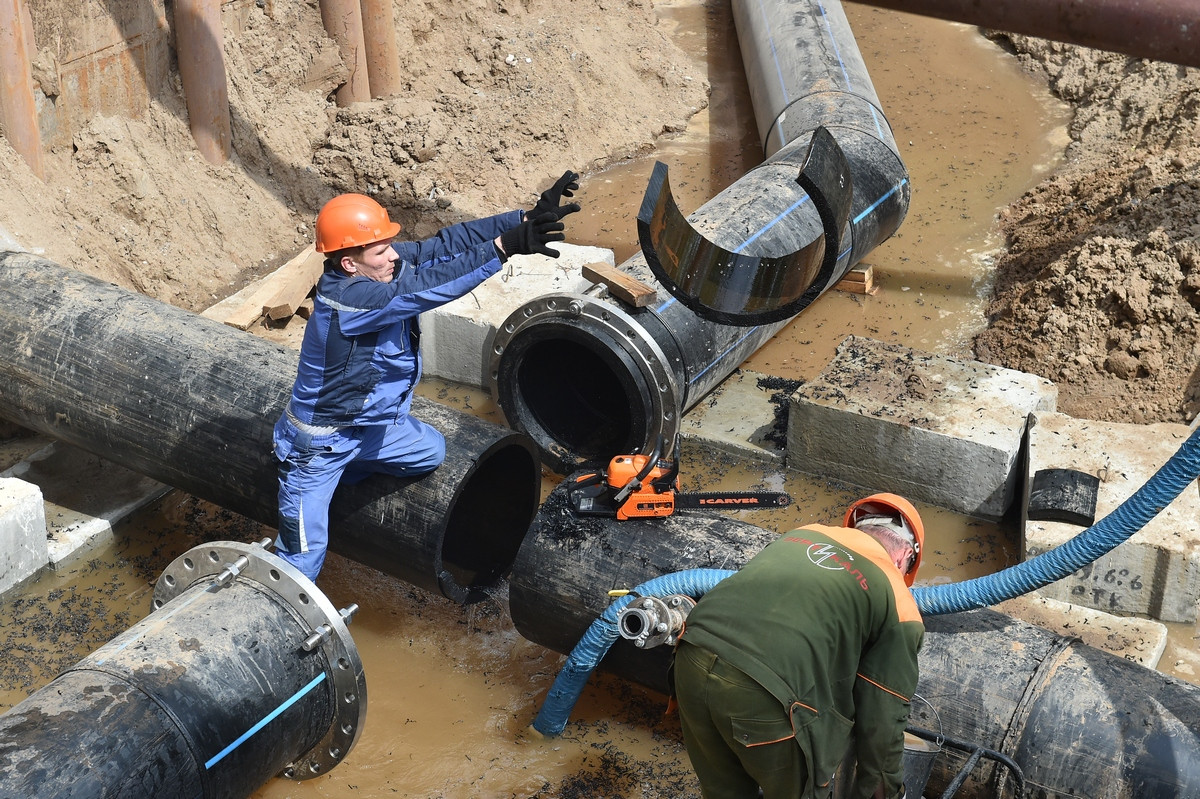 Installation of storm sewage and other elements of the drainage system is a process that requires certain knowledge and skills. Although some homeowners prefer to save on drainage system installation by doing it themselves, professional installation of gutters and the entire drainage system guarantees a more reliable and durable result. If you decide to order water drainage from specialists, expect that drainage work will take from 3 to 10 days depending on the project complexity.
Installation of storm sewage and other elements of the drainage system is a process that requires certain knowledge and skills. Although some homeowners prefer to save on drainage system installation by doing it themselves, professional installation of gutters and the entire drainage system guarantees a more reliable and durable result. If you decide to order water drainage from specialists, expect that drainage work will take from 3 to 10 days depending on the project complexity.
Here is a step-by-step process for self-installation of surface drainage:
- System planning: Identify low points on the plot where water accumulates and think through routes for its drainage.
- Route marking: Mark the locations of trays, pipes, and wells, considering the natural slope of the terrain.
- Digging trenches: For drainage pipes, the depth is usually 60-80 cm, width 30-40 cm. For trays, the depth depends on their height plus 10-15 cm for the cushion.
- Creating a cushion: Pour and compact a layer of sand 10-15 cm on the bottom of the trench, then a layer of crushed stone or gravel 5-10 cm.
- Installing drainage elements: Lay drainage pipes or trays, maintaining a constant slope of sewage pipes of at least 2 cm per meter.
- Connecting elements: Use appropriate fittings to connect pipes, ensuring tightness.
- Backfilling: Fill the trenches in layers, periodically compacting the soil.
- Finishing: Restore the lawn or road surface above the trenches.
If you need to buy drainage trays or other system elements, pay attention to the quality of materials — they should be resistant to ultraviolet radiation, temperature fluctuations, and mechanical loads. Honestly, it's better to overpay for quality materials than to deal with system repairs after a year or two.
To ensure long-term and uninterrupted operation of the drainage system, it is necessary to periodically conduct maintenance and preventive measures. This includes:
- Cleaning trays, rain receivers, and sand traps from accumulated garbage, leaves, and other contaminants;
- Checking the integrity of pipes and connections for leaks or blockages;
- Removing vegetation that may impede normal water flow;
- Inspecting and cleaning roof gutters and gutter pipes on the roof;
- Checking the system operation after heavy rains or snow melting to identify possible problem areas.
Timely performance of preventive work will help avoid clogs, leaks, and other malfunctions, ensuring effective functioning of the drainage system and protection of the plot from flooding. Drainage services and regular maintenance of drainage systems will allow you to focus on other aspects of plot improvement.
For those who want to get a turnkey storm sewage system, comprehensive service packages are usually offered, including design, material supply, installation, and subsequent system maintenance.
Examples of drainage systems for atmospheric precipitation
On a small plot of up to 10 acres, it is often sufficient to install a point water collection system with several rain receivers combined into a common drainage network. In the Kyiv office of a landscape company, I observed models of various solutions for plots of different sizes and configurations.
Example of a drainage system with rain receivers on a small plot:
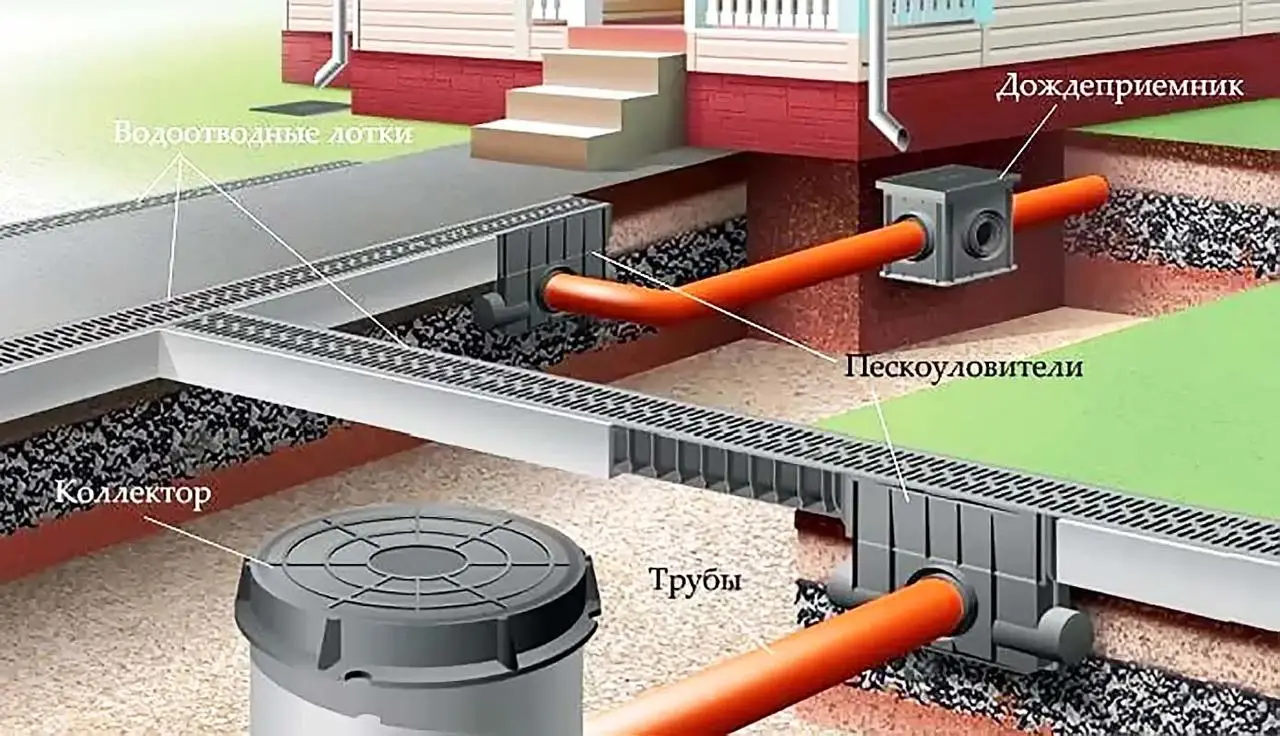
Example of a drainage system with linear trays on a large plot:
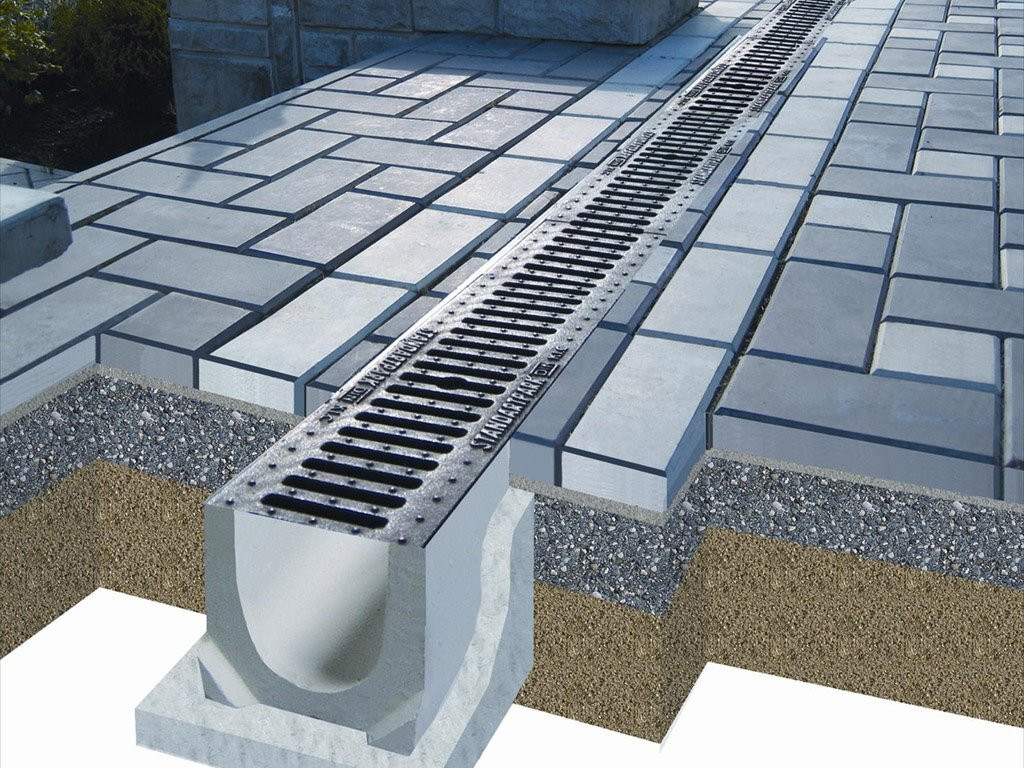
How does point water collection work and why is it so effective on small plots? The point system is a real guardian watching over your plot. It intercepts water in specific lowlands and problem areas, not requiring large-scale earthworks throughout the territory. Due to its compactness and the possibility of point installation, this approach allows solving the flooding problem without radical landscape redesign.
Thus, a well-designed and implemented system for draining rainwater and meltwater will protect the plot territory, buildings, and structures from the negative effects of excessive moisture, extend their service life, and provide comfortable conditions for living and recreation.
